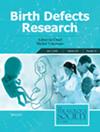How Does Maternal Lipopolysaccharide Exposure Impact Prenatal Testicular Development in Rats, and Could α-Tocopherol Provide a Protective Effect? A Histological, Immunohistochemical and Biochemical Study
Abstract
Background
Lipopolysaccharides or endotoxins trigger proinflammatory cytokines and nitric oxide release, whereas α-tocopherol protects cells from oxidative damage. This study investigated the effects of maternal lipopolysaccharide exposure on prenatal testicular development in male rat offspring and assessed α-tocopherol's protective role.
Methods
Forty pregnant female rats were divided into four groups. Group I (control) included a negative control receiving normal saline and a positive control receiving 30 mg/kg of α-tocopherol intraperitoneally from the 3rd to 18th gestational day. Group II received 50 mg/kg of lipopolysaccharides intraperitoneally from the 13th to 17th gestational day, whereas Group III received both α-tocopherol and lipopolysaccharides at the same dosages. On the seventh day postpartum, fetuses were weighed, sexed, and dissected; sera from male fetuses were collected for biochemical analysis, and fetal testes were used for histology, immunohistochemistry, and morphometry.
Results
Rats treated with lipopolysaccharide showed reduced body weight, testosterone, and luteinizing hormone levels, with histopathological changes, including thickened testicular capsules and abnormalities in the number, size, shape, and cellular components of seminiferous tubules. These adverse effects were improved by α-tocopherol supplementation.
Conclusion
We concluded that lipopolysaccharide exposure during pregnancy impairs testicular development and steroidogenesis, which are ameliorated by α-tocopherol coadministration.

 求助内容:
求助内容: 应助结果提醒方式:
应助结果提醒方式:


